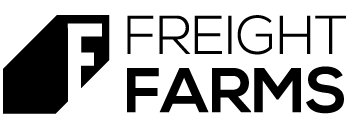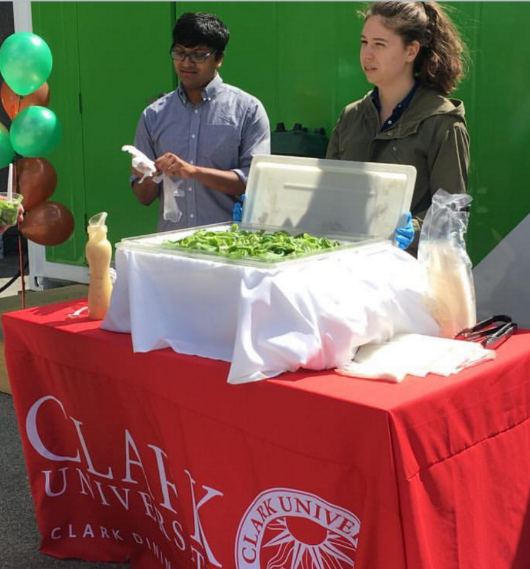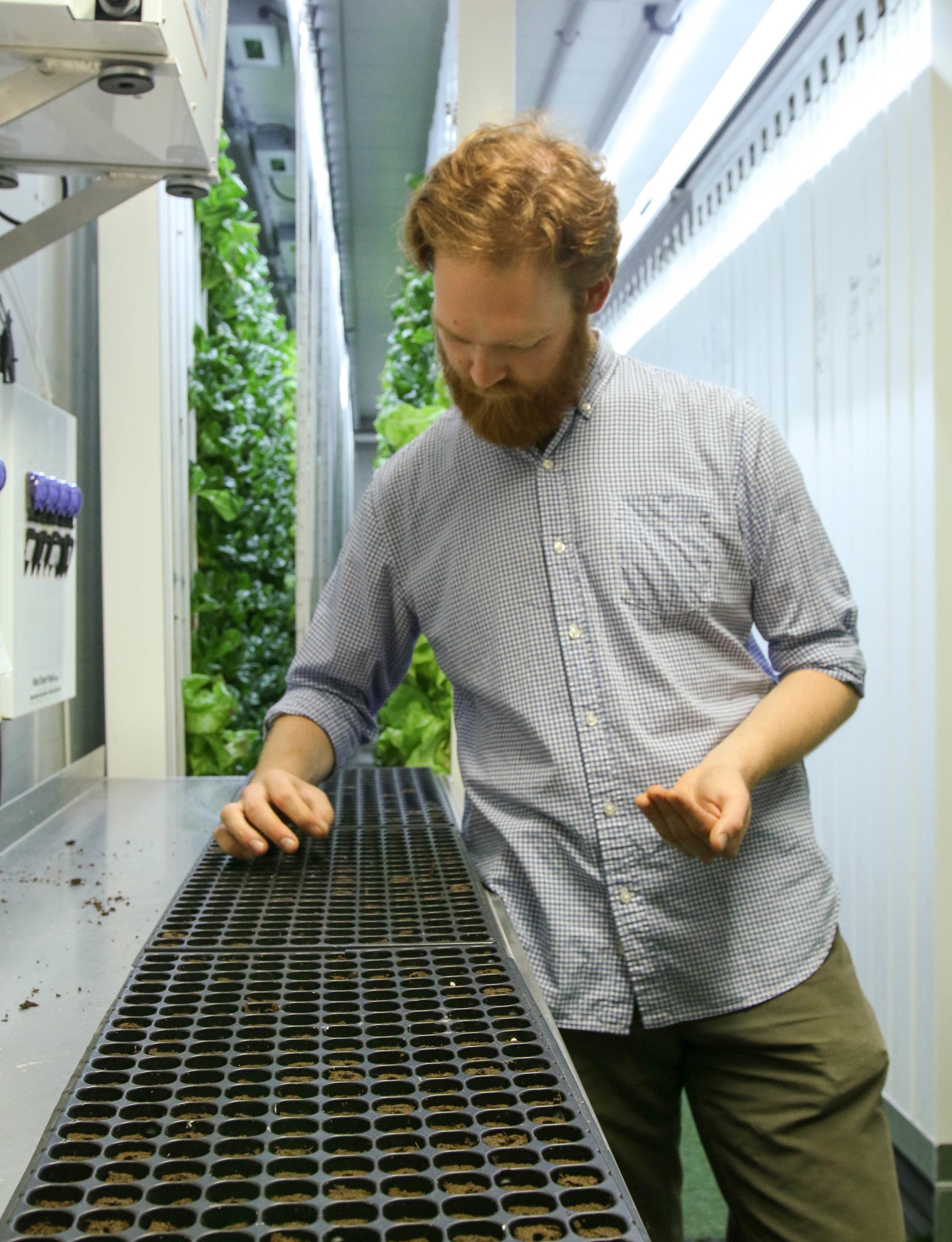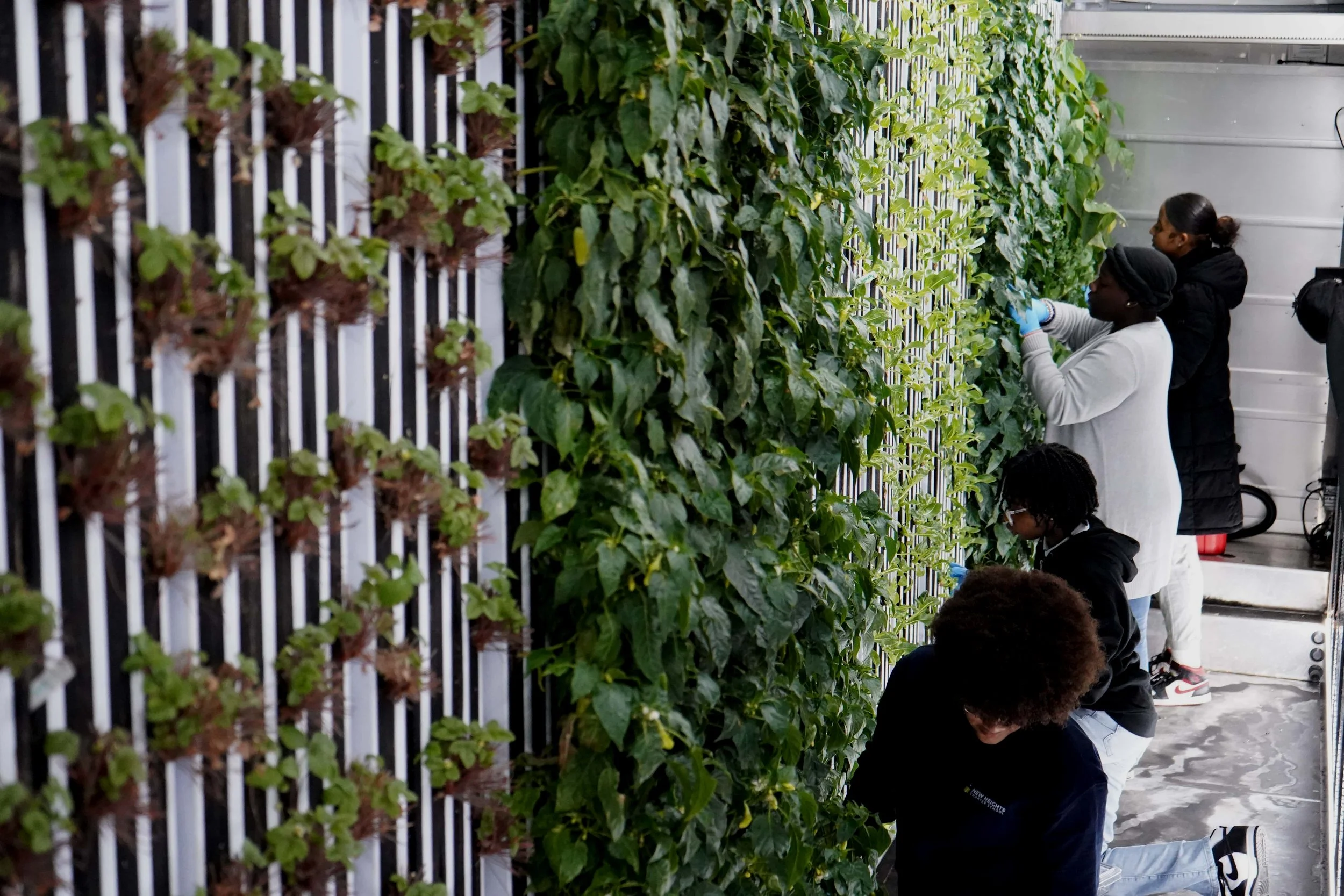Webinar Recap: Freight Farming on Campus
Making Healthy, Sustainable Food a Staple of Campus Culture
More and more, students are becoming active in understanding where their food comes from, and how it is produced. Incorporating a Leafy Green Machine into dining services is a fantastic way to demonstrate a commitment to sustainability, as well as engage with students around food and promote nutrition and wellness.
Universities can work together with dining service providers to integrate a Freight Farms project on campus. We recently traveled to Clark University to chat with individuals from Clark and Sodexo to learn more about their partnership and how the LGM has helped them fulfill their goals in the dining hall and beyond. Keep reading to find a brief recap of our conversation, or watch the full Webinar recording below!
Clark University and Sodexo
To gain a deeper understanding of how a Freight Farms project operates on campus, we sat down with some of the key project stakeholders including Heather Vaillette, the District Manager with Sodexo, Michael Newmark, General Manager of Clark Dining Services, and Nick Pagan, a graduate student and the primary operator of the Leafy Green Machine on campus.
Why a Freight Farms Project
Freight Farms has deep roots at Clark University. Our co-founder and CEO Brad McNamara is a Clark alum, and in the summer of 2012, Brad and his co-founder Jon Friedman built the first Leafy Green Machine prototype on Clark's campus. Along the way, they got input from Heather, who was then serving as General Manager of Dining Services. So once the LGM became available for purchase, it was a no-brainer that they were going to bring one to campus.
Aside from the history Clark and Freight Farms share, bringing a Freight Farms project to campus made sense from a mission standpoint. Sustainability is a core value at Clark, and it's incorporated into every aspect of student life on campus. According to Michael Newmark, Clark was the first university in Massachusetts to sign on to the Real Food Challenge, a student-run organization that partners with food and beverage managers to source 20% of all food sold on campus from local, ecologically-sound, humanely raised or fair trade vendors by 2020. Both Clark and Sodexo agreed that Freight Farms supported their existing mission and would help them reach their future goals. Students demand to know where their food is coming from, and with the Leafy Green Machine, they can physically see the farm, and the student-farmer delivering his produce to the dining hall just feet from where it's served in the dining hall.
Building the hype with transparency
The key to moving this process along was open lines of communication with every party involved. Heather and Michael agreed that getting multiple departments on board with their plan to bring the LGM to campus was essential. They wanted to make sure that everyone from staff working at the admissions office, to the president of the university were informed about the project to help spread the word, build enthusiasm, and help with any logistical challenges they might encounter along the way.
Site Choice
The biggest factors to consider when choosing a location for the Leafy Green Machine on campus or otherwise are:
Water source
Electrical source
But to Clark, it was also important to consider the visibility of the Leafy Green Machine to make it accessible to both current and incoming students, faculty, as well as the Worcester community. Heather and Michael started with a list of five or so potential spots and whittled it down through several conversations with the Freight Farms team, and ultimately decided that the perfect location would be in the parking lot between the science center and the admissions office.
Key Operators
One of the most important aspects of any Freight Farms project is finding the perfect farmer (or farmers) to run the day-to-day operations. Clark's Leafy Green Machine has two key operators. The primary farmer is a student Sodexo employee, and the secondary operator, a farm intern from Clark's Office of Sustainability.
Sodexo and the Sustainability Office hired their respective farmers before the LGM even arrived on campus, and each year go through the hiring process yearly to ensure a smooth transition as students graduate and move on.
Spreading the word
Even though Heather and Michael had the various departments already on board for the Leafy Green Machine, they knew that it was equally important to spread the word to students as well. Here's a basic breakdown of what they did to get the news out and get the Clark community excited about the Leafy Green Machine:
Media: They started creating a buzz around the project before the LGM was even delivered to campus by recruiting the student newspaper to write up a full-length feature.
Launch event: Clark worked with their student farmer to plan their first harvest so that it fell during Earth Week. The marketing team sent out an invitation to the entire student community to encourage everyone to come out and sample the lettuce.
Ongoing engagement: The dining staff placed signs in the dining hall to identify the freight farms lettuce. They also give two to three farm tours per month to Sodexo accounts, the Worcester community, and public schools in the area.
Clark students offering samples from their first harvest.
Q&A with Farmer Nick, Clark's Primary Freight Farms Operator
Nick Pagen, class of '15, is now wrapping up his master's at Clark and gaining valuable experience working as the resident freight farmer on campus. As an undergrad, Nick worked for Sodexo in the dining hall, but when he heard a hydroponic farm in a shipping container was coming to campus, he jumped on the opportunity. Nick has been the primary operator of Clark's LGM for the past year now. We spoke with Nick about his daily routine and how he works together with Sodexo's Executive Chef to plan his weekly harvests.
Nick estimates that he harvests around 800 heads of lettuce per week. On Mondays, he harvests between 300-500 heads of lettuce, carries them across the street to the kitchen where he washes them, and then brings them upstairs to the chefs in the kitchen. It doesn't matter if it's rain or shine, or even snow, he just walks the produce right across the street.
Nick started out growing butterhead and bibb lettuce, and once he felt he had mastered that he began experimenting growing kale because there was a high student demand. Nick says the kale he grows in their Leafy Green Machine is exceptionally tender and has been a huge hit in the dining hall.
Nick Pagen, Clark University student and resident freight farmer with Sodexo, working in the farm.
“On harvest days I deliver the lettuce around 10:30, lunch service starts at 11, so students are getting produce that was harvested just a half an hour ago”
We’re incredibly grateful that Heather, Michael, and Nick could share their journey to becoming freight farmers with us. Check out Part 2 of this blog series to read a transcript of the question and answer segment of this webinar. You can also watch the full recording here and get more details on how Clark and Sodexo collaborated to bring the LGM to campus.












